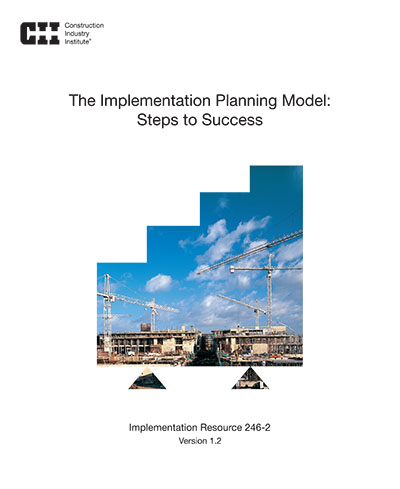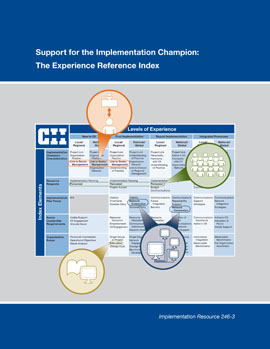
The Implementation Planning Model: Steps to Success, Version 1.2
No organization can continue status quo for an indefinite period of time. The reasons behind this need for improvement and change are varied and heavily dependent on organization culture, market demands, competition, and work force demographics to name a few. However, even with these varied forces working for and against change, an organization must resolve itself to the need to improve and modify procedures on a regular and continuing basis. Given this demand for continuous change and the introduction of new practices, the question arises, “Why has the capital facility investment industry been traditionally reluctant to introduce and implement new practices?” Of particular concern is the question, “Why do the practices identified through CII research efforts still face resistance to implementation within CII organizations?”
The requirement to aggressively consider the adoption of new and/or improved practices and the need to facilitate this adoption prompted the CII Implementation Strategy Committee to undertake the current research into how to successfully undertake implementation efforts.
The 10-step Planning Model should be viewed as a series of steps that begins with needs analysis and ends at implementation and benchmarking. An organization examining the possibility of implementing a new practice should develop an implementation plan that uses the steps as milestones for the schedule and process.In addition this tools includes the:
- Implementation Matrix – This matrix within the Implementation Planning Model outlines tasks, barriers, strategies and success indicators that will be required from an organization that is undertaking the implementation of a practice or process change.
- Staircase Implementation Model – This staircase model introduces a series of phased steps to implementation that are intended to provide an organization with a stepwise approach to successful implementation.
- Implementation Pyramid – Developed from prior research, provides an organization with a big picture model of the steps required in the implementation process. IR 246-2 builds upon the fourth step, Implementation Plan & Goals, of the Implementation Pyramid.



